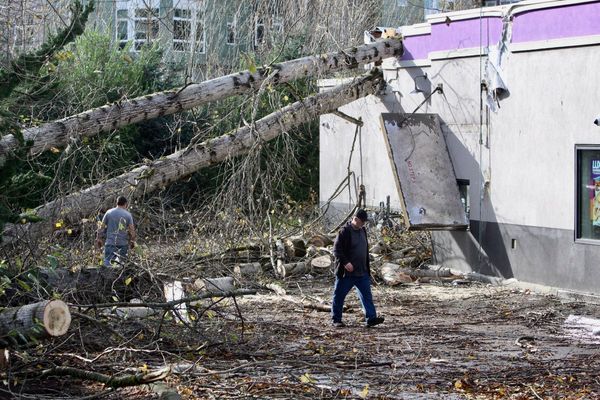Nasa astronaut Don Pettit aboard the International Space Station has unveiled videos of dazzling auroras captured from the orbiting laboratory.
One of the videos, which he shared recently on X, shows spectacular green lights glowing below the space station as it flies over the southern hemisphere.
“The aurora seen today from the space station while orbit was passing between Australia and Antartica,” Mr Pettit posted on X earlier this week.
Another video he shared on the social media platform this week shows aurora in the form of a “green vaporous turbulence” above Earth as the ISS flies by.
Auroras are caused when bursts of charged particles released from the Sun – known as coronal mass ejections or CMEs – interact with the Earth’s magnetic field.
The space weather phenomenon is called aurora australis in the southern hemisphere and aurora borealis in the northern hemisphere.
Aurora lights may be of different colours depending on different molecules in the atmosphere getting charged by the geomagnetic storm.
For instance, oxygen in the form of O₂ gas or as ozone in the upper atmosphere, gives off a fluorescent green hue while nitrogen tends to gives a blue, red, or sometimes pink colour.
Since the Earth’s magnetic field is the strongest at the poles, auroras are seen more distinctly in the skies near the polar regions.
Green vaporous turbulence; tonight’s show of aurora from @Space_Station pic.twitter.com/ZX0dINFhLa
— Don Pettit (@astro_Pettit) April 5, 2025
Mr Pettit, 69, is a spaceflight veteran and the oldest astronaut aboard the space station.
He has logged over 370 days in space overall and conducted over 13 hours of spacewalk.
The Nasa astronaut is known for the variety of photographs he takes from the space station, including of space weather phenomena or onboard science experiments, which he regularly shares on X.
Formation flying; Starlink satellites tracing parallel lines in the sky.
— Don Pettit (@astro_Pettit) April 11, 2025
Thanks to @BabakTafreshi for assembling this clip from timelapse images. pic.twitter.com/9vCKt1lCx5
On Friday, he shared a timelapse video of Elon Musk’s Starlink satellites flying in formation, tracing parallel lines in the sky.
Earlier this month, he posted a short six-second video captured straight below the space station of flashes of upper atmospheric lightning.
OK, this is kind of out there and caters to your inner Uber-Geek. Nadir view of Transient Luminous Events (TLE ) or upper atmospheric lightning. This clip real time is about 6 seconds over the Amazon basin and shows a number of TLE displays from Sprites to blue jets from a… pic.twitter.com/IE0Edtm2Rl
— Don Pettit (@astro_Pettit) April 3, 2025
These flashes, called Transient Luminous Events (TLE), reveal a range of lightning phenomenon above the Amazon basin.
The clip includes several types of TLE above the South American region, including sprites and blue jets.
Mr Pettit is currently on his fourth ISS mission, serving as a flight engineer.
He arrived at the ISS in September aboard Russia’s Soyuz spacecraft along with two other cosmonauts – Aleksey Ovchinin and Ivan Vagner.
The trio are expected to return to Earth later in April.
A pink moon is on its way. Here’s how to see it
Scientists want a new mission to hunt for life beyond Earth
Make solar panels out of the Moon to let us live in space, scientists say
The galaxy next to ours is being torn apart, study suggests
Amazon scrubs first launch of space internet satellites
Surprising origin of ‘city-killer’ asteroid that may strike Moon revealed







